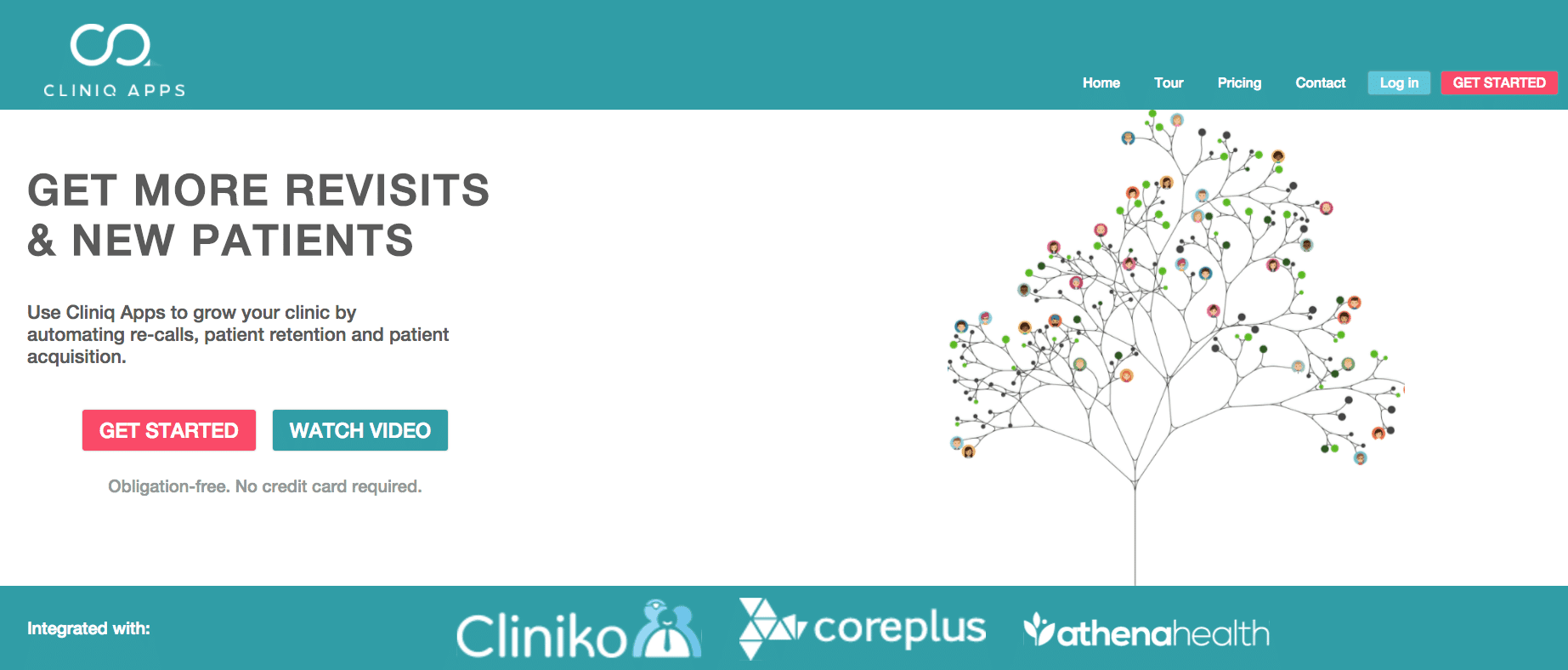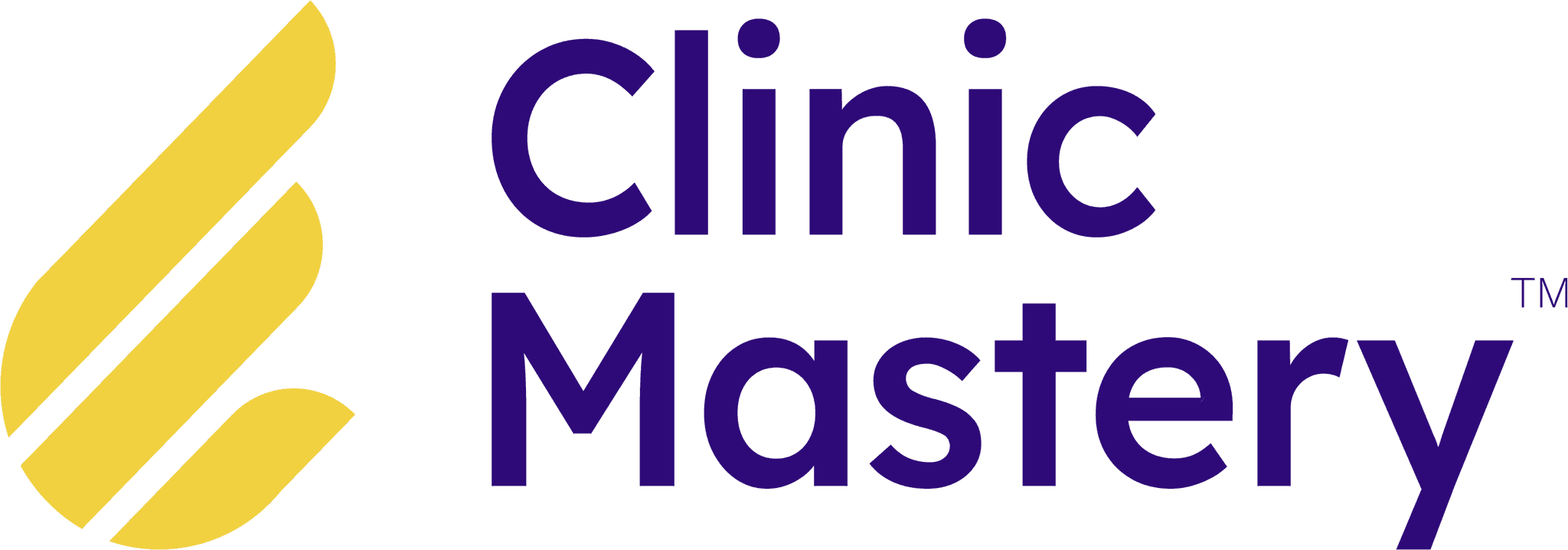Brand & Marketing
•
15 min read
•
Jan 26, 2018
Reactivate Patients: Fill Your Appointment Books
Fill Your Appointment Books
As a Private Practice Owner, you’re often wondering how you can fill your appointment books in the quickest time for the least amount of money, so, being able to easily reactivate patients is crucial.
The fact is, patients who don’t have future appointments booked need to be nurtured just as much as the patients who do.
It’s vital for the ongoing health of your patient, and your clinic that there is a nurturing method and scheduled follow up.
You Need To Keep Your Appointment Books Full
If you are the main practitioner, seeing the bulk of the patients or you’ve transitioned to owner status (not consulting at all) then it can be a real frustration to see gaps in the diaries of your other practitioners.
The gaps mean your income becomes unpredictable, practitioners may get bored, lack drive, look for other opportunities and the possibility of growing your clinic is really limited, placing even more burden on you to do it all yourself.

Reactivated Patients Are Quality Patients
When you reactivate patients, you’re reconnecting with people who already know, like and trust you, so, your invitation for them to return often converts much better than chasing new clients.
Don’t get me wrong, we all need a steady, predictable flow of new clients, however, there’s a great opportunity to nurture our existing or past clients.
After working with 100’s of private practice clinic owners, and as part of the Business Academy we’ve helped implement some of the most fundamental strategies for growing your clinic, and we have the tried and tested methods that will help you.
In this article, I’m going to share with you how to reactivate patients so that you can fill your appointment books now and over the next couple of months to help Grow Your Clinic.

Why Should You Reactivate Patients?!
The reason most (68%) patients don’t return and require the reactivation is due to ‘Perceived Indifference’. (Prof John Gattorna from Macquarie University 2008 published research on the question ‘Why do we lose customers’)
Basically, It means that a patient believes that it doesn’t matter to you if they return or not.
We know that is not true, so, it’s important to show how much you care by nurturing them with regular contact after each appointment, especially if they don’t have any future appointments booked.

It’s About Adding Value To Your Patients
Remember, you are the trusted advisor in your patient’s health.
If patients don’t maintain their future appointments, their outcomes and your effectiveness as a health professional can be reduced.
What you need is a safety net to ensure clients are carefully nurtured through their journey and that they don’t experience a lapse of care.
Not only that, when you reactivate patients it’s a great opportunity to Add Value to them by offering them access to your latest skills, techniques and knowledge to further improve their outcomes.

As health professionals we do a lot of professional development so that we stay up to date with the best ways to help people feel and function better.
Our past patients would benefit massively from experiencing your new abilities because you can improve their life even further.
It’s about finding new and better ways to serve and reactivate patients.
Don’t under-service your patients because you’re afraid of over-servicing.
When Should You Reactivate Patients
First of all, you need to remember that these processes apply to patients who have no future appointment booked.
At various intervals they will need to be contacted, and you can choose the frequency.
Don’t worry if you feel you are nagging clients.
People are generally busy, and will more likely appreciate your attention to follow up, especially when you deliver a genuine message.
You can always ask for forgiveness if a client is feeling hassled.
If a client cancels their appointment and is unable to reschedule right away you might offer to place them on a Recall List or Priority List.
From here, you would offer to contact them later to reschedule e.g. in 2 weeks time, depending on the situation.
If you attempt to contact, or if the recall is unsuccessful, then your safety net is the Reactivation Schedule.
In the Reactivation schedule your client is contacted at regular intervals with information, special offers, or personal notes inviting them to return to the clinic to improve their health.

Example Reactivation Schedule:
Reactivation email at 1 month
Reactivation SMS at 3 months
Reactivation email at 6 months
Reactivation letter at 12,18 months
Reactivation letter at 2,3,4 years
You might also create a special offer/package (great value for time, money) when you reactivate patients at predictably slow times of the year.
For instance if a certain month of the year is historically quieter in your appointment book, you might be best to reactivate patients just before that period.
Another good time to schedule a patient reactivation is when you have just hired a new practitioner.

You can create a special offer/package as part of your reactivation to fill their (new practitioner) books quickly and make sure they are fully utilised.
You are also able to automate your patient reactivation for individual clients by using a system like Cliniq Apps.
When you use a system like this, patients receive reactivation based on their individual behaviours e.g. time from last appointment, or if they have no future appointment booked.
How to Reactivate Past Patients
There are a number of different communication methods to help you reach out to your past clients and reactivate them.
We’ve found it really important to use a combination and variety of methods to help increase the conversion rate of your reactivation.
It’s even better when this entire process can be automated so that you don’t have to do so much admin work. That where a system like Cliniq Apps allows you to get your time back…

Method 1 of 5 – Email
Email is a highly leveraged and is an automated process, enabling you to send a series of broadcasts at the scheduled time and in a particular sequence.
Typically 2-3 emails as part of the campaign is best for exposure because some emails may be missed amongst the patient’s inbox/junk/spam or just their busy schedule.
Email is quick, cheap and you can often get analytics on how effective each broadcast has been (e.g. open rates and click through rates).
Pro Tip: Use a catchy subject line like “are you interested in this?” to improve open rates
Method 2 of 5 – Posted Letter
Using Letters means we can add a personal feel to our communication with an added handwritten note or personal signature.
You also have the opportunity to include marketing material, vouchers, printed newsletters or a small token gift/item in the envelope.
Printing, folding, packing and delivering letters takes time and money, but the advantage is household letterboxes are not as cluttered as email inboxes, and the success rate can be much higher.
Letters can be slower, with no automated analytics on effectiveness, though, they do add a personal touch, and can help keep your database up to date with current home addresses.
Pro Tip: Use a 3M Post-it-Note with a handwritten “Hi client name, hope you are fit, healthy and active, see you soon” and hand-drawn smiley face to increase the conversion (Yes! Book here)
Method 3 of 5 – Phone Call
This can be the most effective way to connect with your clients, however it relies on having them answer the phone.
If you need to leave a message, do so, and then follow up with either of the other methods to ensure the client is engaged (e.g. send email with mention of the missed call or sms).
Practitioners who make these calls can get caught delivering consultations over the phone, so our suggestion would be for a trained member of your admin team to deliver these calls.
Pro Tip: The calls can be framed as a courtesy call to check in on the patient and extend the invitation and to help arrange their next appointment time.
Method 4 of 5 – SMS Message
This is an immediate and effective way to engage with your clients.
It’s hard to convey tone through a text message, but with the right words you can achieve the desired result.
Make sure the message has a clear call to action and a simple process to act. Complexity will catch you out when you are only playing with a few characters in the message.
Pro Tip: ensure people can click to book, reply or call you in the message.
Method 5 of 5 – Push Notifications via Mobile App
If your clinic has a mobile app, you can engage your clients with a push notification
Straight to the palm of your client’s hand, this is an interactive way to readily engage your clients.
You can announce new products and services and invite people to book appointments.
There are limitations around the number of active app users, so it’s best to use this in conjunction with other methods.
6-Step Reactivation Process
Step 1 of 6: Choose Your Audience
Segment your database/client list using your client management software (e.g. Cliniq Apps) to help you deliver personalised and specific messages to the individual.
This is particularly important when you’re communicating with a large audience all at once.
Step 2 of 6: Select your Frequency
As a rule of thumb we suggest starting the reactivation process with any client who has not attended your clinic for at most 1 months, and has no future appointment booked.
If this time frame is too short for your particular profession/client etc, you can still contact your client to send useful information, and reserve the invitation to book an appointment until a more appropriate time.
Step 3 of 6: Select your method
Choose your combination from the Top 5 Reactivation Methods above.
Step 4 of 6: Create Your Invitation
Use a special offer as a low barrier to entry, making it really attractive for your client to return to the clinic.
Advise clients on the new and better ways you can serve their health and body.
Tell them of the fantastic new skills or technologies you now have as a result of your continuing professional development and let them know how it can help them.
Remember, clients always want to know What’s In It For Me (WIIFM), how is it going to improve my life.
Step 5 of 6: Send The Message
Remember to personalise it.
Step 6 of 6: Identify a Tracking Method
It’s always useful to be able to track how effective each reactivation campaign is.
To review results of each broadcast, you should identify a special code or appointment type that you can use to measure the rebooking.
Measure the impact with Clinic Excellence Indicators such as Rebooking Percentage and Patient Visit Average (PVA).

Here’s Why Your Reactivations Won’t Succeed
Out of date contact details
If you haven’t got an up to date record of people’s details e.g email address, phone numbers etc
Your message either won’t reach enough people or reach the right people
Random & Spasmodic Communication
If you don’t regularly communicate with your community, they’re not conditioned to listening
Remember people want to feel valued continually, not just when you need extra appointments filled.
The offer/invitation has no relevant value
If you haven’t got anything relevant and special to offer patients to return, why would they?
Any communication or invitation must have a strong ‘WIIFM’ (What’s In It For Me) so that it resonates with the patient’s needs and wants.
You make it hard to book in again
There needs to be minimal friction to create a booking, otherwise people will delay or forget e.g. online booking link, sms reply button, call now button etc
You don’t have a follow up
You need regular contact with your community so that you have more opportunities to keep them active.
Don’t hope that one email or sms will do the trick. Create a structured campaign and series of contact points.
You don’t have a schedule of when you will do it
Consistency is key to filling your books, don’t be reactionary, have it in the diary of when you are going to do it throughout the year, or better yeat, have an automated platform like Cliniq Apps to do it for you, it’s that simple.

Conclusion
When you reactivate patients you are able to:
Follow up client health to maintain it
Check their progress on their initial complaint that you helped them with
Check to see if they are still functioning ‘better’ following your help
Check to see that they are able to move freely, without pain or restriction in other areas of their body so that they do their best to avoid relapse or other problems
Review their home activities and exercise regime to assess technique and update their program for what’s relevant now
Follow up client health to optimise it
Help them prepare for an event or activity on their calendar
Help them perform at a higher level each day so that they can be their best and live their ever improving potential
Help them reach a milestone or goal so that they experience the abundance of their body
Fill your appointment books
Increase the utilisation of practitioners and spaces
Ask reactivated clients for a word of mouth referral of a family member, friend, colleague, teammate.
Remember that when you reactivate patients and invite them to accept your offer, you should be truthful and the terms and conditions should be clearly stated in the reactivation.
If you reactivate patients regularly, your clients and clinic will thrive.
Imagine if we could help you implement this system to reactivate patients, or any of the other (50+) systems, scripts, policies or procedures you need to grow your clinic as a member of our business academy?!
Currently we only have 4 enrolments per year into the business academy. That’s because we have a structured, hands on approach with you.
The best place to start is for us to meet on a call so that we can exchange some value for your time with us.
If we think we could work together, then we can speak more about the academy, otherwise you’ll have left the call with some great tangibles to implement.
Until next time;
Live with Passion and Serve with Care.
Fill Your Appointment Books
As a Private Practice Owner, you’re often wondering how you can fill your appointment books in the quickest time for the least amount of money, so, being able to easily reactivate patients is crucial.
The fact is, patients who don’t have future appointments booked need to be nurtured just as much as the patients who do.
It’s vital for the ongoing health of your patient, and your clinic that there is a nurturing method and scheduled follow up.
You Need To Keep Your Appointment Books Full
If you are the main practitioner, seeing the bulk of the patients or you’ve transitioned to owner status (not consulting at all) then it can be a real frustration to see gaps in the diaries of your other practitioners.
The gaps mean your income becomes unpredictable, practitioners may get bored, lack drive, look for other opportunities and the possibility of growing your clinic is really limited, placing even more burden on you to do it all yourself.

Reactivated Patients Are Quality Patients
When you reactivate patients, you’re reconnecting with people who already know, like and trust you, so, your invitation for them to return often converts much better than chasing new clients.
Don’t get me wrong, we all need a steady, predictable flow of new clients, however, there’s a great opportunity to nurture our existing or past clients.
After working with 100’s of private practice clinic owners, and as part of the Business Academy we’ve helped implement some of the most fundamental strategies for growing your clinic, and we have the tried and tested methods that will help you.
In this article, I’m going to share with you how to reactivate patients so that you can fill your appointment books now and over the next couple of months to help Grow Your Clinic.

Why Should You Reactivate Patients?!
The reason most (68%) patients don’t return and require the reactivation is due to ‘Perceived Indifference’. (Prof John Gattorna from Macquarie University 2008 published research on the question ‘Why do we lose customers’)
Basically, It means that a patient believes that it doesn’t matter to you if they return or not.
We know that is not true, so, it’s important to show how much you care by nurturing them with regular contact after each appointment, especially if they don’t have any future appointments booked.

It’s About Adding Value To Your Patients
Remember, you are the trusted advisor in your patient’s health.
If patients don’t maintain their future appointments, their outcomes and your effectiveness as a health professional can be reduced.
What you need is a safety net to ensure clients are carefully nurtured through their journey and that they don’t experience a lapse of care.
Not only that, when you reactivate patients it’s a great opportunity to Add Value to them by offering them access to your latest skills, techniques and knowledge to further improve their outcomes.

As health professionals we do a lot of professional development so that we stay up to date with the best ways to help people feel and function better.
Our past patients would benefit massively from experiencing your new abilities because you can improve their life even further.
It’s about finding new and better ways to serve and reactivate patients.
Don’t under-service your patients because you’re afraid of over-servicing.
When Should You Reactivate Patients
First of all, you need to remember that these processes apply to patients who have no future appointment booked.
At various intervals they will need to be contacted, and you can choose the frequency.
Don’t worry if you feel you are nagging clients.
People are generally busy, and will more likely appreciate your attention to follow up, especially when you deliver a genuine message.
You can always ask for forgiveness if a client is feeling hassled.
If a client cancels their appointment and is unable to reschedule right away you might offer to place them on a Recall List or Priority List.
From here, you would offer to contact them later to reschedule e.g. in 2 weeks time, depending on the situation.
If you attempt to contact, or if the recall is unsuccessful, then your safety net is the Reactivation Schedule.
In the Reactivation schedule your client is contacted at regular intervals with information, special offers, or personal notes inviting them to return to the clinic to improve their health.

Example Reactivation Schedule:
Reactivation email at 1 month
Reactivation SMS at 3 months
Reactivation email at 6 months
Reactivation letter at 12,18 months
Reactivation letter at 2,3,4 years
You might also create a special offer/package (great value for time, money) when you reactivate patients at predictably slow times of the year.
For instance if a certain month of the year is historically quieter in your appointment book, you might be best to reactivate patients just before that period.
Another good time to schedule a patient reactivation is when you have just hired a new practitioner.

You can create a special offer/package as part of your reactivation to fill their (new practitioner) books quickly and make sure they are fully utilised.
You are also able to automate your patient reactivation for individual clients by using a system like Cliniq Apps.
When you use a system like this, patients receive reactivation based on their individual behaviours e.g. time from last appointment, or if they have no future appointment booked.
How to Reactivate Past Patients
There are a number of different communication methods to help you reach out to your past clients and reactivate them.
We’ve found it really important to use a combination and variety of methods to help increase the conversion rate of your reactivation.
It’s even better when this entire process can be automated so that you don’t have to do so much admin work. That where a system like Cliniq Apps allows you to get your time back…

Method 1 of 5 – Email
Email is a highly leveraged and is an automated process, enabling you to send a series of broadcasts at the scheduled time and in a particular sequence.
Typically 2-3 emails as part of the campaign is best for exposure because some emails may be missed amongst the patient’s inbox/junk/spam or just their busy schedule.
Email is quick, cheap and you can often get analytics on how effective each broadcast has been (e.g. open rates and click through rates).
Pro Tip: Use a catchy subject line like “are you interested in this?” to improve open rates
Method 2 of 5 – Posted Letter
Using Letters means we can add a personal feel to our communication with an added handwritten note or personal signature.
You also have the opportunity to include marketing material, vouchers, printed newsletters or a small token gift/item in the envelope.
Printing, folding, packing and delivering letters takes time and money, but the advantage is household letterboxes are not as cluttered as email inboxes, and the success rate can be much higher.
Letters can be slower, with no automated analytics on effectiveness, though, they do add a personal touch, and can help keep your database up to date with current home addresses.
Pro Tip: Use a 3M Post-it-Note with a handwritten “Hi client name, hope you are fit, healthy and active, see you soon” and hand-drawn smiley face to increase the conversion (Yes! Book here)
Method 3 of 5 – Phone Call
This can be the most effective way to connect with your clients, however it relies on having them answer the phone.
If you need to leave a message, do so, and then follow up with either of the other methods to ensure the client is engaged (e.g. send email with mention of the missed call or sms).
Practitioners who make these calls can get caught delivering consultations over the phone, so our suggestion would be for a trained member of your admin team to deliver these calls.
Pro Tip: The calls can be framed as a courtesy call to check in on the patient and extend the invitation and to help arrange their next appointment time.
Method 4 of 5 – SMS Message
This is an immediate and effective way to engage with your clients.
It’s hard to convey tone through a text message, but with the right words you can achieve the desired result.
Make sure the message has a clear call to action and a simple process to act. Complexity will catch you out when you are only playing with a few characters in the message.
Pro Tip: ensure people can click to book, reply or call you in the message.
Method 5 of 5 – Push Notifications via Mobile App
If your clinic has a mobile app, you can engage your clients with a push notification
Straight to the palm of your client’s hand, this is an interactive way to readily engage your clients.
You can announce new products and services and invite people to book appointments.
There are limitations around the number of active app users, so it’s best to use this in conjunction with other methods.
6-Step Reactivation Process
Step 1 of 6: Choose Your Audience
Segment your database/client list using your client management software (e.g. Cliniq Apps) to help you deliver personalised and specific messages to the individual.
This is particularly important when you’re communicating with a large audience all at once.
Step 2 of 6: Select your Frequency
As a rule of thumb we suggest starting the reactivation process with any client who has not attended your clinic for at most 1 months, and has no future appointment booked.
If this time frame is too short for your particular profession/client etc, you can still contact your client to send useful information, and reserve the invitation to book an appointment until a more appropriate time.
Step 3 of 6: Select your method
Choose your combination from the Top 5 Reactivation Methods above.
Step 4 of 6: Create Your Invitation
Use a special offer as a low barrier to entry, making it really attractive for your client to return to the clinic.
Advise clients on the new and better ways you can serve their health and body.
Tell them of the fantastic new skills or technologies you now have as a result of your continuing professional development and let them know how it can help them.
Remember, clients always want to know What’s In It For Me (WIIFM), how is it going to improve my life.
Step 5 of 6: Send The Message
Remember to personalise it.
Step 6 of 6: Identify a Tracking Method
It’s always useful to be able to track how effective each reactivation campaign is.
To review results of each broadcast, you should identify a special code or appointment type that you can use to measure the rebooking.
Measure the impact with Clinic Excellence Indicators such as Rebooking Percentage and Patient Visit Average (PVA).

Here’s Why Your Reactivations Won’t Succeed
Out of date contact details
If you haven’t got an up to date record of people’s details e.g email address, phone numbers etc
Your message either won’t reach enough people or reach the right people
Random & Spasmodic Communication
If you don’t regularly communicate with your community, they’re not conditioned to listening
Remember people want to feel valued continually, not just when you need extra appointments filled.
The offer/invitation has no relevant value
If you haven’t got anything relevant and special to offer patients to return, why would they?
Any communication or invitation must have a strong ‘WIIFM’ (What’s In It For Me) so that it resonates with the patient’s needs and wants.
You make it hard to book in again
There needs to be minimal friction to create a booking, otherwise people will delay or forget e.g. online booking link, sms reply button, call now button etc
You don’t have a follow up
You need regular contact with your community so that you have more opportunities to keep them active.
Don’t hope that one email or sms will do the trick. Create a structured campaign and series of contact points.
You don’t have a schedule of when you will do it
Consistency is key to filling your books, don’t be reactionary, have it in the diary of when you are going to do it throughout the year, or better yeat, have an automated platform like Cliniq Apps to do it for you, it’s that simple.

Conclusion
When you reactivate patients you are able to:
Follow up client health to maintain it
Check their progress on their initial complaint that you helped them with
Check to see if they are still functioning ‘better’ following your help
Check to see that they are able to move freely, without pain or restriction in other areas of their body so that they do their best to avoid relapse or other problems
Review their home activities and exercise regime to assess technique and update their program for what’s relevant now
Follow up client health to optimise it
Help them prepare for an event or activity on their calendar
Help them perform at a higher level each day so that they can be their best and live their ever improving potential
Help them reach a milestone or goal so that they experience the abundance of their body
Fill your appointment books
Increase the utilisation of practitioners and spaces
Ask reactivated clients for a word of mouth referral of a family member, friend, colleague, teammate.
Remember that when you reactivate patients and invite them to accept your offer, you should be truthful and the terms and conditions should be clearly stated in the reactivation.
If you reactivate patients regularly, your clients and clinic will thrive.
Imagine if we could help you implement this system to reactivate patients, or any of the other (50+) systems, scripts, policies or procedures you need to grow your clinic as a member of our business academy?!
Currently we only have 4 enrolments per year into the business academy. That’s because we have a structured, hands on approach with you.
The best place to start is for us to meet on a call so that we can exchange some value for your time with us.
If we think we could work together, then we can speak more about the academy, otherwise you’ll have left the call with some great tangibles to implement.
Until next time;
Live with Passion and Serve with Care.
Fill Your Appointment Books
As a Private Practice Owner, you’re often wondering how you can fill your appointment books in the quickest time for the least amount of money, so, being able to easily reactivate patients is crucial.
The fact is, patients who don’t have future appointments booked need to be nurtured just as much as the patients who do.
It’s vital for the ongoing health of your patient, and your clinic that there is a nurturing method and scheduled follow up.
You Need To Keep Your Appointment Books Full
If you are the main practitioner, seeing the bulk of the patients or you’ve transitioned to owner status (not consulting at all) then it can be a real frustration to see gaps in the diaries of your other practitioners.
The gaps mean your income becomes unpredictable, practitioners may get bored, lack drive, look for other opportunities and the possibility of growing your clinic is really limited, placing even more burden on you to do it all yourself.

Reactivated Patients Are Quality Patients
When you reactivate patients, you’re reconnecting with people who already know, like and trust you, so, your invitation for them to return often converts much better than chasing new clients.
Don’t get me wrong, we all need a steady, predictable flow of new clients, however, there’s a great opportunity to nurture our existing or past clients.
After working with 100’s of private practice clinic owners, and as part of the Business Academy we’ve helped implement some of the most fundamental strategies for growing your clinic, and we have the tried and tested methods that will help you.
In this article, I’m going to share with you how to reactivate patients so that you can fill your appointment books now and over the next couple of months to help Grow Your Clinic.

Why Should You Reactivate Patients?!
The reason most (68%) patients don’t return and require the reactivation is due to ‘Perceived Indifference’. (Prof John Gattorna from Macquarie University 2008 published research on the question ‘Why do we lose customers’)
Basically, It means that a patient believes that it doesn’t matter to you if they return or not.
We know that is not true, so, it’s important to show how much you care by nurturing them with regular contact after each appointment, especially if they don’t have any future appointments booked.

It’s About Adding Value To Your Patients
Remember, you are the trusted advisor in your patient’s health.
If patients don’t maintain their future appointments, their outcomes and your effectiveness as a health professional can be reduced.
What you need is a safety net to ensure clients are carefully nurtured through their journey and that they don’t experience a lapse of care.
Not only that, when you reactivate patients it’s a great opportunity to Add Value to them by offering them access to your latest skills, techniques and knowledge to further improve their outcomes.

As health professionals we do a lot of professional development so that we stay up to date with the best ways to help people feel and function better.
Our past patients would benefit massively from experiencing your new abilities because you can improve their life even further.
It’s about finding new and better ways to serve and reactivate patients.
Don’t under-service your patients because you’re afraid of over-servicing.
When Should You Reactivate Patients
First of all, you need to remember that these processes apply to patients who have no future appointment booked.
At various intervals they will need to be contacted, and you can choose the frequency.
Don’t worry if you feel you are nagging clients.
People are generally busy, and will more likely appreciate your attention to follow up, especially when you deliver a genuine message.
You can always ask for forgiveness if a client is feeling hassled.
If a client cancels their appointment and is unable to reschedule right away you might offer to place them on a Recall List or Priority List.
From here, you would offer to contact them later to reschedule e.g. in 2 weeks time, depending on the situation.
If you attempt to contact, or if the recall is unsuccessful, then your safety net is the Reactivation Schedule.
In the Reactivation schedule your client is contacted at regular intervals with information, special offers, or personal notes inviting them to return to the clinic to improve their health.

Example Reactivation Schedule:
Reactivation email at 1 month
Reactivation SMS at 3 months
Reactivation email at 6 months
Reactivation letter at 12,18 months
Reactivation letter at 2,3,4 years
You might also create a special offer/package (great value for time, money) when you reactivate patients at predictably slow times of the year.
For instance if a certain month of the year is historically quieter in your appointment book, you might be best to reactivate patients just before that period.
Another good time to schedule a patient reactivation is when you have just hired a new practitioner.

You can create a special offer/package as part of your reactivation to fill their (new practitioner) books quickly and make sure they are fully utilised.
You are also able to automate your patient reactivation for individual clients by using a system like Cliniq Apps.
When you use a system like this, patients receive reactivation based on their individual behaviours e.g. time from last appointment, or if they have no future appointment booked.
How to Reactivate Past Patients
There are a number of different communication methods to help you reach out to your past clients and reactivate them.
We’ve found it really important to use a combination and variety of methods to help increase the conversion rate of your reactivation.
It’s even better when this entire process can be automated so that you don’t have to do so much admin work. That where a system like Cliniq Apps allows you to get your time back…

Method 1 of 5 – Email
Email is a highly leveraged and is an automated process, enabling you to send a series of broadcasts at the scheduled time and in a particular sequence.
Typically 2-3 emails as part of the campaign is best for exposure because some emails may be missed amongst the patient’s inbox/junk/spam or just their busy schedule.
Email is quick, cheap and you can often get analytics on how effective each broadcast has been (e.g. open rates and click through rates).
Pro Tip: Use a catchy subject line like “are you interested in this?” to improve open rates
Method 2 of 5 – Posted Letter
Using Letters means we can add a personal feel to our communication with an added handwritten note or personal signature.
You also have the opportunity to include marketing material, vouchers, printed newsletters or a small token gift/item in the envelope.
Printing, folding, packing and delivering letters takes time and money, but the advantage is household letterboxes are not as cluttered as email inboxes, and the success rate can be much higher.
Letters can be slower, with no automated analytics on effectiveness, though, they do add a personal touch, and can help keep your database up to date with current home addresses.
Pro Tip: Use a 3M Post-it-Note with a handwritten “Hi client name, hope you are fit, healthy and active, see you soon” and hand-drawn smiley face to increase the conversion (Yes! Book here)
Method 3 of 5 – Phone Call
This can be the most effective way to connect with your clients, however it relies on having them answer the phone.
If you need to leave a message, do so, and then follow up with either of the other methods to ensure the client is engaged (e.g. send email with mention of the missed call or sms).
Practitioners who make these calls can get caught delivering consultations over the phone, so our suggestion would be for a trained member of your admin team to deliver these calls.
Pro Tip: The calls can be framed as a courtesy call to check in on the patient and extend the invitation and to help arrange their next appointment time.
Method 4 of 5 – SMS Message
This is an immediate and effective way to engage with your clients.
It’s hard to convey tone through a text message, but with the right words you can achieve the desired result.
Make sure the message has a clear call to action and a simple process to act. Complexity will catch you out when you are only playing with a few characters in the message.
Pro Tip: ensure people can click to book, reply or call you in the message.
Method 5 of 5 – Push Notifications via Mobile App
If your clinic has a mobile app, you can engage your clients with a push notification
Straight to the palm of your client’s hand, this is an interactive way to readily engage your clients.
You can announce new products and services and invite people to book appointments.
There are limitations around the number of active app users, so it’s best to use this in conjunction with other methods.
6-Step Reactivation Process
Step 1 of 6: Choose Your Audience
Segment your database/client list using your client management software (e.g. Cliniq Apps) to help you deliver personalised and specific messages to the individual.
This is particularly important when you’re communicating with a large audience all at once.
Step 2 of 6: Select your Frequency
As a rule of thumb we suggest starting the reactivation process with any client who has not attended your clinic for at most 1 months, and has no future appointment booked.
If this time frame is too short for your particular profession/client etc, you can still contact your client to send useful information, and reserve the invitation to book an appointment until a more appropriate time.
Step 3 of 6: Select your method
Choose your combination from the Top 5 Reactivation Methods above.
Step 4 of 6: Create Your Invitation
Use a special offer as a low barrier to entry, making it really attractive for your client to return to the clinic.
Advise clients on the new and better ways you can serve their health and body.
Tell them of the fantastic new skills or technologies you now have as a result of your continuing professional development and let them know how it can help them.
Remember, clients always want to know What’s In It For Me (WIIFM), how is it going to improve my life.
Step 5 of 6: Send The Message
Remember to personalise it.
Step 6 of 6: Identify a Tracking Method
It’s always useful to be able to track how effective each reactivation campaign is.
To review results of each broadcast, you should identify a special code or appointment type that you can use to measure the rebooking.
Measure the impact with Clinic Excellence Indicators such as Rebooking Percentage and Patient Visit Average (PVA).

Here’s Why Your Reactivations Won’t Succeed
Out of date contact details
If you haven’t got an up to date record of people’s details e.g email address, phone numbers etc
Your message either won’t reach enough people or reach the right people
Random & Spasmodic Communication
If you don’t regularly communicate with your community, they’re not conditioned to listening
Remember people want to feel valued continually, not just when you need extra appointments filled.
The offer/invitation has no relevant value
If you haven’t got anything relevant and special to offer patients to return, why would they?
Any communication or invitation must have a strong ‘WIIFM’ (What’s In It For Me) so that it resonates with the patient’s needs and wants.
You make it hard to book in again
There needs to be minimal friction to create a booking, otherwise people will delay or forget e.g. online booking link, sms reply button, call now button etc
You don’t have a follow up
You need regular contact with your community so that you have more opportunities to keep them active.
Don’t hope that one email or sms will do the trick. Create a structured campaign and series of contact points.
You don’t have a schedule of when you will do it
Consistency is key to filling your books, don’t be reactionary, have it in the diary of when you are going to do it throughout the year, or better yeat, have an automated platform like Cliniq Apps to do it for you, it’s that simple.

Conclusion
When you reactivate patients you are able to:
Follow up client health to maintain it
Check their progress on their initial complaint that you helped them with
Check to see if they are still functioning ‘better’ following your help
Check to see that they are able to move freely, without pain or restriction in other areas of their body so that they do their best to avoid relapse or other problems
Review their home activities and exercise regime to assess technique and update their program for what’s relevant now
Follow up client health to optimise it
Help them prepare for an event or activity on their calendar
Help them perform at a higher level each day so that they can be their best and live their ever improving potential
Help them reach a milestone or goal so that they experience the abundance of their body
Fill your appointment books
Increase the utilisation of practitioners and spaces
Ask reactivated clients for a word of mouth referral of a family member, friend, colleague, teammate.
Remember that when you reactivate patients and invite them to accept your offer, you should be truthful and the terms and conditions should be clearly stated in the reactivation.
If you reactivate patients regularly, your clients and clinic will thrive.
Imagine if we could help you implement this system to reactivate patients, or any of the other (50+) systems, scripts, policies or procedures you need to grow your clinic as a member of our business academy?!
Currently we only have 4 enrolments per year into the business academy. That’s because we have a structured, hands on approach with you.
The best place to start is for us to meet on a call so that we can exchange some value for your time with us.
If we think we could work together, then we can speak more about the academy, otherwise you’ll have left the call with some great tangibles to implement.
Until next time;
Live with Passion and Serve with Care.
Fill Your Appointment Books
As a Private Practice Owner, you’re often wondering how you can fill your appointment books in the quickest time for the least amount of money, so, being able to easily reactivate patients is crucial.
The fact is, patients who don’t have future appointments booked need to be nurtured just as much as the patients who do.
It’s vital for the ongoing health of your patient, and your clinic that there is a nurturing method and scheduled follow up.
You Need To Keep Your Appointment Books Full
If you are the main practitioner, seeing the bulk of the patients or you’ve transitioned to owner status (not consulting at all) then it can be a real frustration to see gaps in the diaries of your other practitioners.
The gaps mean your income becomes unpredictable, practitioners may get bored, lack drive, look for other opportunities and the possibility of growing your clinic is really limited, placing even more burden on you to do it all yourself.

Reactivated Patients Are Quality Patients
When you reactivate patients, you’re reconnecting with people who already know, like and trust you, so, your invitation for them to return often converts much better than chasing new clients.
Don’t get me wrong, we all need a steady, predictable flow of new clients, however, there’s a great opportunity to nurture our existing or past clients.
After working with 100’s of private practice clinic owners, and as part of the Business Academy we’ve helped implement some of the most fundamental strategies for growing your clinic, and we have the tried and tested methods that will help you.
In this article, I’m going to share with you how to reactivate patients so that you can fill your appointment books now and over the next couple of months to help Grow Your Clinic.

Why Should You Reactivate Patients?!
The reason most (68%) patients don’t return and require the reactivation is due to ‘Perceived Indifference’. (Prof John Gattorna from Macquarie University 2008 published research on the question ‘Why do we lose customers’)
Basically, It means that a patient believes that it doesn’t matter to you if they return or not.
We know that is not true, so, it’s important to show how much you care by nurturing them with regular contact after each appointment, especially if they don’t have any future appointments booked.

It’s About Adding Value To Your Patients
Remember, you are the trusted advisor in your patient’s health.
If patients don’t maintain their future appointments, their outcomes and your effectiveness as a health professional can be reduced.
What you need is a safety net to ensure clients are carefully nurtured through their journey and that they don’t experience a lapse of care.
Not only that, when you reactivate patients it’s a great opportunity to Add Value to them by offering them access to your latest skills, techniques and knowledge to further improve their outcomes.

As health professionals we do a lot of professional development so that we stay up to date with the best ways to help people feel and function better.
Our past patients would benefit massively from experiencing your new abilities because you can improve their life even further.
It’s about finding new and better ways to serve and reactivate patients.
Don’t under-service your patients because you’re afraid of over-servicing.
When Should You Reactivate Patients
First of all, you need to remember that these processes apply to patients who have no future appointment booked.
At various intervals they will need to be contacted, and you can choose the frequency.
Don’t worry if you feel you are nagging clients.
People are generally busy, and will more likely appreciate your attention to follow up, especially when you deliver a genuine message.
You can always ask for forgiveness if a client is feeling hassled.
If a client cancels their appointment and is unable to reschedule right away you might offer to place them on a Recall List or Priority List.
From here, you would offer to contact them later to reschedule e.g. in 2 weeks time, depending on the situation.
If you attempt to contact, or if the recall is unsuccessful, then your safety net is the Reactivation Schedule.
In the Reactivation schedule your client is contacted at regular intervals with information, special offers, or personal notes inviting them to return to the clinic to improve their health.

Example Reactivation Schedule:
Reactivation email at 1 month
Reactivation SMS at 3 months
Reactivation email at 6 months
Reactivation letter at 12,18 months
Reactivation letter at 2,3,4 years
You might also create a special offer/package (great value for time, money) when you reactivate patients at predictably slow times of the year.
For instance if a certain month of the year is historically quieter in your appointment book, you might be best to reactivate patients just before that period.
Another good time to schedule a patient reactivation is when you have just hired a new practitioner.

You can create a special offer/package as part of your reactivation to fill their (new practitioner) books quickly and make sure they are fully utilised.
You are also able to automate your patient reactivation for individual clients by using a system like Cliniq Apps.
When you use a system like this, patients receive reactivation based on their individual behaviours e.g. time from last appointment, or if they have no future appointment booked.
How to Reactivate Past Patients
There are a number of different communication methods to help you reach out to your past clients and reactivate them.
We’ve found it really important to use a combination and variety of methods to help increase the conversion rate of your reactivation.
It’s even better when this entire process can be automated so that you don’t have to do so much admin work. That where a system like Cliniq Apps allows you to get your time back…

Method 1 of 5 – Email
Email is a highly leveraged and is an automated process, enabling you to send a series of broadcasts at the scheduled time and in a particular sequence.
Typically 2-3 emails as part of the campaign is best for exposure because some emails may be missed amongst the patient’s inbox/junk/spam or just their busy schedule.
Email is quick, cheap and you can often get analytics on how effective each broadcast has been (e.g. open rates and click through rates).
Pro Tip: Use a catchy subject line like “are you interested in this?” to improve open rates
Method 2 of 5 – Posted Letter
Using Letters means we can add a personal feel to our communication with an added handwritten note or personal signature.
You also have the opportunity to include marketing material, vouchers, printed newsletters or a small token gift/item in the envelope.
Printing, folding, packing and delivering letters takes time and money, but the advantage is household letterboxes are not as cluttered as email inboxes, and the success rate can be much higher.
Letters can be slower, with no automated analytics on effectiveness, though, they do add a personal touch, and can help keep your database up to date with current home addresses.
Pro Tip: Use a 3M Post-it-Note with a handwritten “Hi client name, hope you are fit, healthy and active, see you soon” and hand-drawn smiley face to increase the conversion (Yes! Book here)
Method 3 of 5 – Phone Call
This can be the most effective way to connect with your clients, however it relies on having them answer the phone.
If you need to leave a message, do so, and then follow up with either of the other methods to ensure the client is engaged (e.g. send email with mention of the missed call or sms).
Practitioners who make these calls can get caught delivering consultations over the phone, so our suggestion would be for a trained member of your admin team to deliver these calls.
Pro Tip: The calls can be framed as a courtesy call to check in on the patient and extend the invitation and to help arrange their next appointment time.
Method 4 of 5 – SMS Message
This is an immediate and effective way to engage with your clients.
It’s hard to convey tone through a text message, but with the right words you can achieve the desired result.
Make sure the message has a clear call to action and a simple process to act. Complexity will catch you out when you are only playing with a few characters in the message.
Pro Tip: ensure people can click to book, reply or call you in the message.
Method 5 of 5 – Push Notifications via Mobile App
If your clinic has a mobile app, you can engage your clients with a push notification
Straight to the palm of your client’s hand, this is an interactive way to readily engage your clients.
You can announce new products and services and invite people to book appointments.
There are limitations around the number of active app users, so it’s best to use this in conjunction with other methods.
6-Step Reactivation Process
Step 1 of 6: Choose Your Audience
Segment your database/client list using your client management software (e.g. Cliniq Apps) to help you deliver personalised and specific messages to the individual.
This is particularly important when you’re communicating with a large audience all at once.
Step 2 of 6: Select your Frequency
As a rule of thumb we suggest starting the reactivation process with any client who has not attended your clinic for at most 1 months, and has no future appointment booked.
If this time frame is too short for your particular profession/client etc, you can still contact your client to send useful information, and reserve the invitation to book an appointment until a more appropriate time.
Step 3 of 6: Select your method
Choose your combination from the Top 5 Reactivation Methods above.
Step 4 of 6: Create Your Invitation
Use a special offer as a low barrier to entry, making it really attractive for your client to return to the clinic.
Advise clients on the new and better ways you can serve their health and body.
Tell them of the fantastic new skills or technologies you now have as a result of your continuing professional development and let them know how it can help them.
Remember, clients always want to know What’s In It For Me (WIIFM), how is it going to improve my life.
Step 5 of 6: Send The Message
Remember to personalise it.
Step 6 of 6: Identify a Tracking Method
It’s always useful to be able to track how effective each reactivation campaign is.
To review results of each broadcast, you should identify a special code or appointment type that you can use to measure the rebooking.
Measure the impact with Clinic Excellence Indicators such as Rebooking Percentage and Patient Visit Average (PVA).

Here’s Why Your Reactivations Won’t Succeed
Out of date contact details
If you haven’t got an up to date record of people’s details e.g email address, phone numbers etc
Your message either won’t reach enough people or reach the right people
Random & Spasmodic Communication
If you don’t regularly communicate with your community, they’re not conditioned to listening
Remember people want to feel valued continually, not just when you need extra appointments filled.
The offer/invitation has no relevant value
If you haven’t got anything relevant and special to offer patients to return, why would they?
Any communication or invitation must have a strong ‘WIIFM’ (What’s In It For Me) so that it resonates with the patient’s needs and wants.
You make it hard to book in again
There needs to be minimal friction to create a booking, otherwise people will delay or forget e.g. online booking link, sms reply button, call now button etc
You don’t have a follow up
You need regular contact with your community so that you have more opportunities to keep them active.
Don’t hope that one email or sms will do the trick. Create a structured campaign and series of contact points.
You don’t have a schedule of when you will do it
Consistency is key to filling your books, don’t be reactionary, have it in the diary of when you are going to do it throughout the year, or better yeat, have an automated platform like Cliniq Apps to do it for you, it’s that simple.

Conclusion
When you reactivate patients you are able to:
Follow up client health to maintain it
Check their progress on their initial complaint that you helped them with
Check to see if they are still functioning ‘better’ following your help
Check to see that they are able to move freely, without pain or restriction in other areas of their body so that they do their best to avoid relapse or other problems
Review their home activities and exercise regime to assess technique and update their program for what’s relevant now
Follow up client health to optimise it
Help them prepare for an event or activity on their calendar
Help them perform at a higher level each day so that they can be their best and live their ever improving potential
Help them reach a milestone or goal so that they experience the abundance of their body
Fill your appointment books
Increase the utilisation of practitioners and spaces
Ask reactivated clients for a word of mouth referral of a family member, friend, colleague, teammate.
Remember that when you reactivate patients and invite them to accept your offer, you should be truthful and the terms and conditions should be clearly stated in the reactivation.
If you reactivate patients regularly, your clients and clinic will thrive.
Imagine if we could help you implement this system to reactivate patients, or any of the other (50+) systems, scripts, policies or procedures you need to grow your clinic as a member of our business academy?!
Currently we only have 4 enrolments per year into the business academy. That’s because we have a structured, hands on approach with you.
The best place to start is for us to meet on a call so that we can exchange some value for your time with us.
If we think we could work together, then we can speak more about the academy, otherwise you’ll have left the call with some great tangibles to implement.
Until next time;
Live with Passion and Serve with Care.




Article by
Ben Lynch
Ben realised after a number of years practicing Podiatry that he was in fact more interested in the person at the end of the foot than the foot itself. Ben's passion for understanding what makes people enjoy a better quality of life is what drives him to be creative and systematic about communication and connection with clients as part of their experience.
How Does Your Clinic Score?
Discover your Clinic Score & Amplify your Impact with Clinics Mastery’s Assess Your Clinic™ Scorecard. Get a rating for the 7 Degrees of Business that you need to master.
Assess Your Clinic
How Does Your Clinic Score?
Discover your Clinic Score & Amplify your Impact with Clinics Mastery’s Assess Your Clinic™ Scorecard. Get a rating for the 7 Degrees of Business that you need to master.
Assess Your Clinic
How Does Your Clinic Score?
Discover your Clinic Score & Amplify your Impact with Clinics Mastery’s Assess Your Clinic™ Scorecard. Get a rating for the 7 Degrees of Business that you need to master.
Assess Your Clinic
Latest
From the Blog
Latest
From the Blog
Latest







